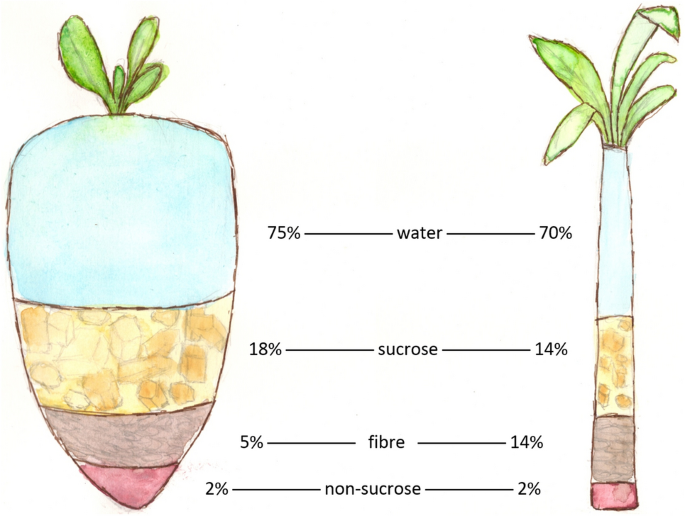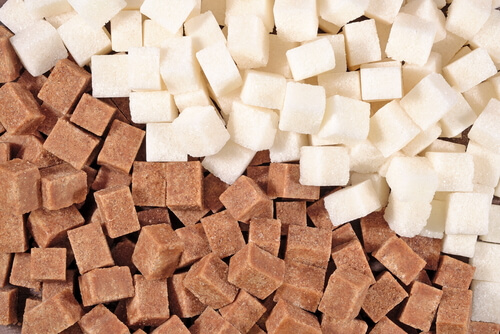In discussions of beet sugar vs cane sugar, the type of the sugar plays a key role in its properties.
In discussions of beet sugar vs cane sugar, the type of the sugar plays a key role in its properties.
Blog Article
Checking Out the Differences in Uses and Benefits In Between Beet Sugar Vs Cane Sugar
In the culinary world, the option in between beet sugar and cane sugar is not just about sweet taste yet involves a nuanced factor to consider of taste, application, and influence. While both sugars stem from different plants, each goes through one-of-a-kind production procedures that discreetly influence their attributes and suitability for different recipes.
Beginnings and Manufacturing Processes of Beet and Cane Sugar

Walking stick sugar, on the other hand, comes from the sugarcane plant, an exotic yard native to Southeast Asia today cultivated in exotic areas worldwide. The production of cane sugar starts with the harvesting of cane stalks, which are squashed to launch the juice. This juice is then steamed to concentrate it, after which it is rotated in centrifuges to create raw sugar crystals. These crystals are additional refined to create the white sugar frequently readily available in shops.

Nutritional Content and Health And Wellness Considerations

When comparing the dietary content of beet sugar and cane sugar, it comes to be apparent that both kinds basically offer the very same calorie values, with about 16 calories per tsp and no significant nutrient diversity. Both sugars, when eaten in excess, can contribute to elevated blood sugar levels, a risk aspect for diabetes and other metabolic conditions. From a health point of view, regulating intake of any kind of sugar, whether from beet or cane, is suggested to avoid these prospective adverse effects on well-being.
Flavor Profiles and Culinary Applications
In spite of their similar chemical structures, beet sugar and cane sugar vary subtly in taste, which can influence their usage in different culinary contexts. Walking stick sugar usually brings a tip of molasses, even in its polished type, lending a cozy, caramel-like touch that enhances baked products, coffee, and chocolate-based dishes. On the other hand, beet sugar is identified by its highly fine-tuned, neutral preference, making it a flexible sugar that does not alter the flavor accounts of dishes.
Ecological Impact and Sustainability
While both beet and cane sugars are obtained from plants, their ecological effects vary considerably because of the distinct techniques of farming and processing required for each and every. Sugar beet cultivation commonly involves substantial automation, which can increase fossil gas consumption and carbon discharges. Nonetheless, beetroots can be grown in cooler climates and need much less watering, possibly reducing water usage compared to sugarcane. Sugarcane, on the other hand, is normally grown in page exotic areas where it counts greatly on watering and a much longer growing duration, raising its water impact.
In addition, the handling of sugarcane usually generates a considerable quantity of waste, consisting of bagasse, which, although functional as biofuel, frequently adds to air contamination if melted inefficiently. Sugar beet handling uses more of the raw products, resulting in much less waste. Both industries face challenges in reducing Read Full Article their ecological impacts, however ongoing innovations in farming methods and waste management are intending to improve sustainability.
Economic Aspects Influencing the Sugar Sector
The economic characteristics of the sugar market are significantly influenced by global market demands and profession policies. Variables such as tariffs, aids, and global trade contracts play essential duties in shaping the affordable landscape. For instance, in regions where sugarcane or sugar beet production is subsidized, producers may have an economic advantage that allows them to offer lower rates on the global market. This can produce differences in success and market accessibility for producers in nations without such subsidies.
Additionally, variations in worldwide demand for sugar, influenced by dietary patterns and commercial usage in foodstuff, straight impact prices and manufacturing degrees. beet sugar vs cane sugar. Climate condition also play a pivotal role, as they can significantly affect crop returns and, subsequently, the supply chain. This irregularity presents a degree of economic uncertainty that can result in investment volatility in sugar production fields, affecting choices from planting to market strategy
Conclusion
Finally, both beet and cane sugar have unique qualities that match various culinary demands. While cane sugar conveys a rich flavor perfect for improving baked products, beet sugar's neutrality is excellent for lighter recipes. Nutritional helpful site similarities notwithstanding, their unique production procedures and environmental influences add complexity to the choice in between them. Therefore, understanding these distinctions aids cooks and consumers make informed choices that straighten with their health and wellness, culinary, and moral choices.
Report this page